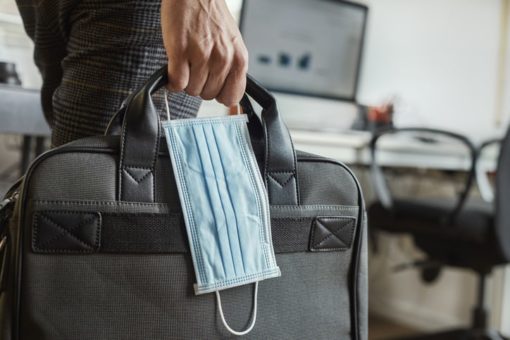The COVID-19 pandemic has brought on changes in everyone’s day-to-day routine. With stay-at-home orders and quarantine guidance coming to the forefront, in-office work was swapped for remote alternatives, with a majority of the population suddenly working from their homes. Now, because of the increased vaccination rates, our world is slowly returning to a more familiar state of normalcy. For many, this will mean transitioning back to in-office work and a change in the routines we’ve become so accustomed to at home.
When you’re in recovery from an eating disorder, this shift in routine may be difficult to cope with. It means a change in your schedule, from physically going to a different location to figuring out meals and snacks throughout the day. Though this change may seem daunting, there are positives in returning to work: a more consistent routine, opportunities for social interaction beyond the home and in-office resources that can help support your recovery. Here are some strategies to help maintain your eating disorder recovery while returning to work in the office:
1. Plan to eat lunch with a coworker.
Meal support is an important part of eating disorder recovery and can be a great tool to use when returning to the workplace. Engaging in conversation and having some company during meals can provide a distraction from the disordered thoughts that often pop up during mealtimes; this can be particularly helpful with normalizing healthy eating behaviors through modeling from your companion. If you have a coworker with whom you feel comfortable, try to plan lunch breaks together when possible. Additionally, if you’re able to leave the building for lunch, you could plan to meet a friend or family member to help support you during the meal. If there are days you just can’t get away from your desk, utilize virtual meal support groups or try listening to a recovery-oriented or Health at Every Size® type of podcast while you eat.
2. Create a recovery-minded space to work in.
In eating disorder treatment, you build a reserve of coping skills and tools to help you progress through and maintain recovery. If you created any visual tools like lists of affirmations, mantras or images that helped in your recovery, hang them on your office walls. Don’t have a private office? Frame a few favorites for your desk or store a couple small pieces in a drawer that you can easily access through your workday. If you have a job that keeps you moving around, turn a favorite affirmation into a keychain or bracelet that you can wear for a quick reminder of why your recovery is worth it.
3. Ask for support when you need it.
This is one of the most important, and oftentimes most difficult, steps you can take in recovering from an eating disorder—recognizing that you need help and then asking for it. When you experience a shift in routine, it’s normal to start having disordered thoughts and behaviors. If you’ve gone through your toolbox of coping skills and resources and continue to feel overwhelmed with a disordered voice, don’t be afraid to ask for help from a friend or family member, therapist, dietitian or anyone else who supports you in your recovery.
Recovering from an eating disorder takes time, and it’s expected that you’ll have to work through significant life transitions, such as going back into the office. However, you’re not expected to do it alone or without resources—use your recovery tools and reach out to your support team when needed. For extra help, contact Center for Discovery.
Madeline Radigan Langham is a registered dietitian with experience in mental health and eating disorder residential treatment. She is passionate about advocating for weight inclusivity and a non-diet approach to help people heal their relationships with food and their bodies. In her free time, she enjoys being outdoors and spending time on trails with her family. You can find more of Madeline’s thoughts and work at radnutrition.net or on Instagram at @mradnutrition.
